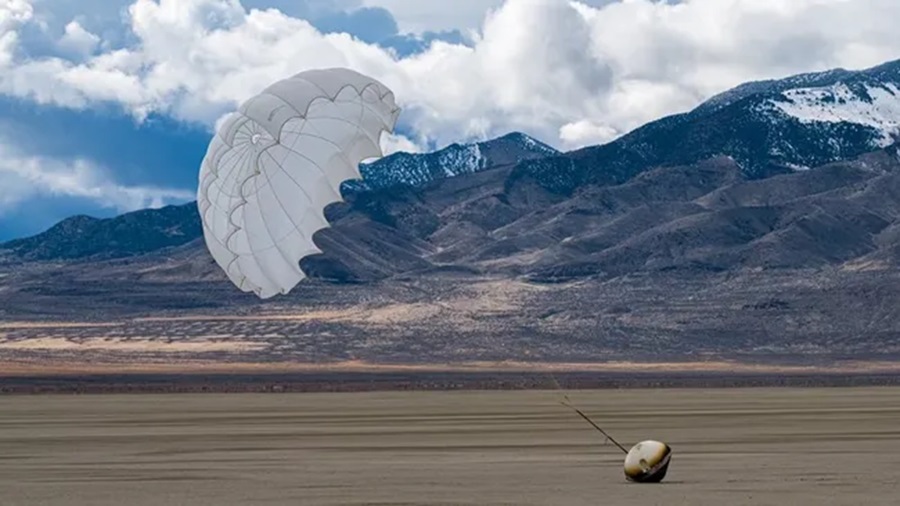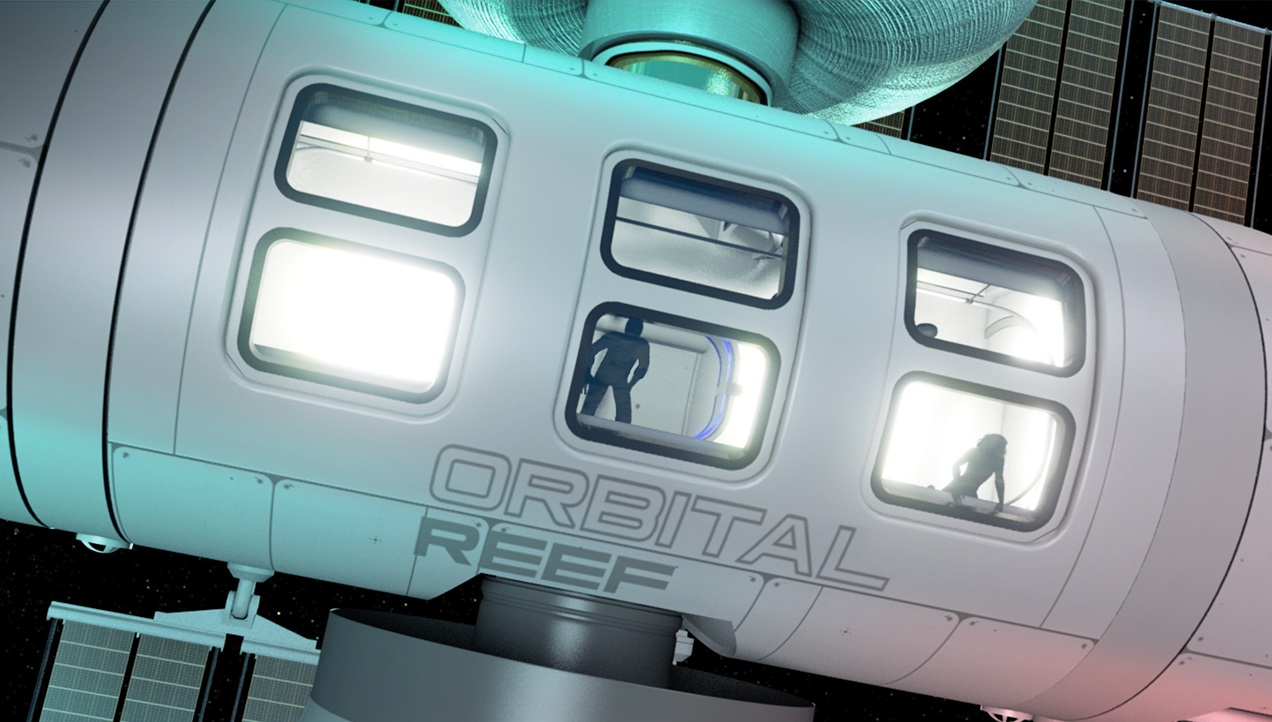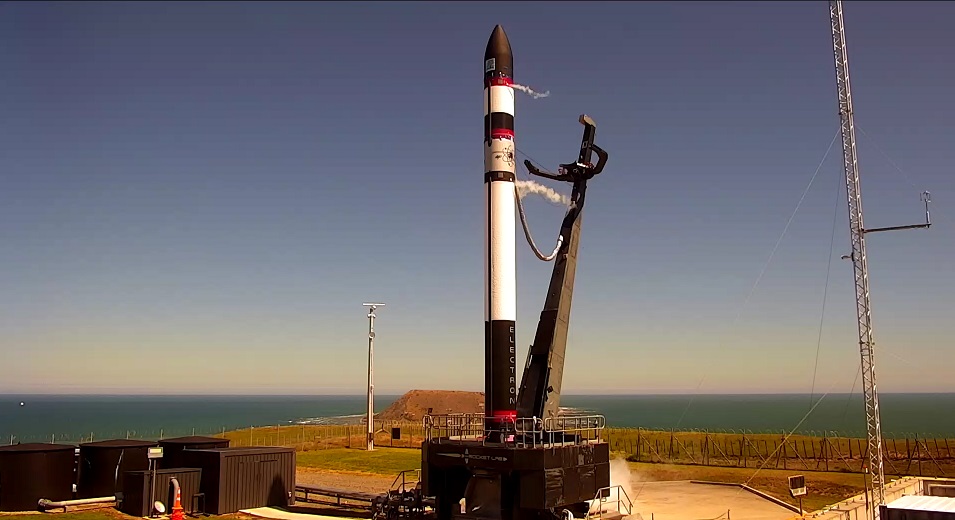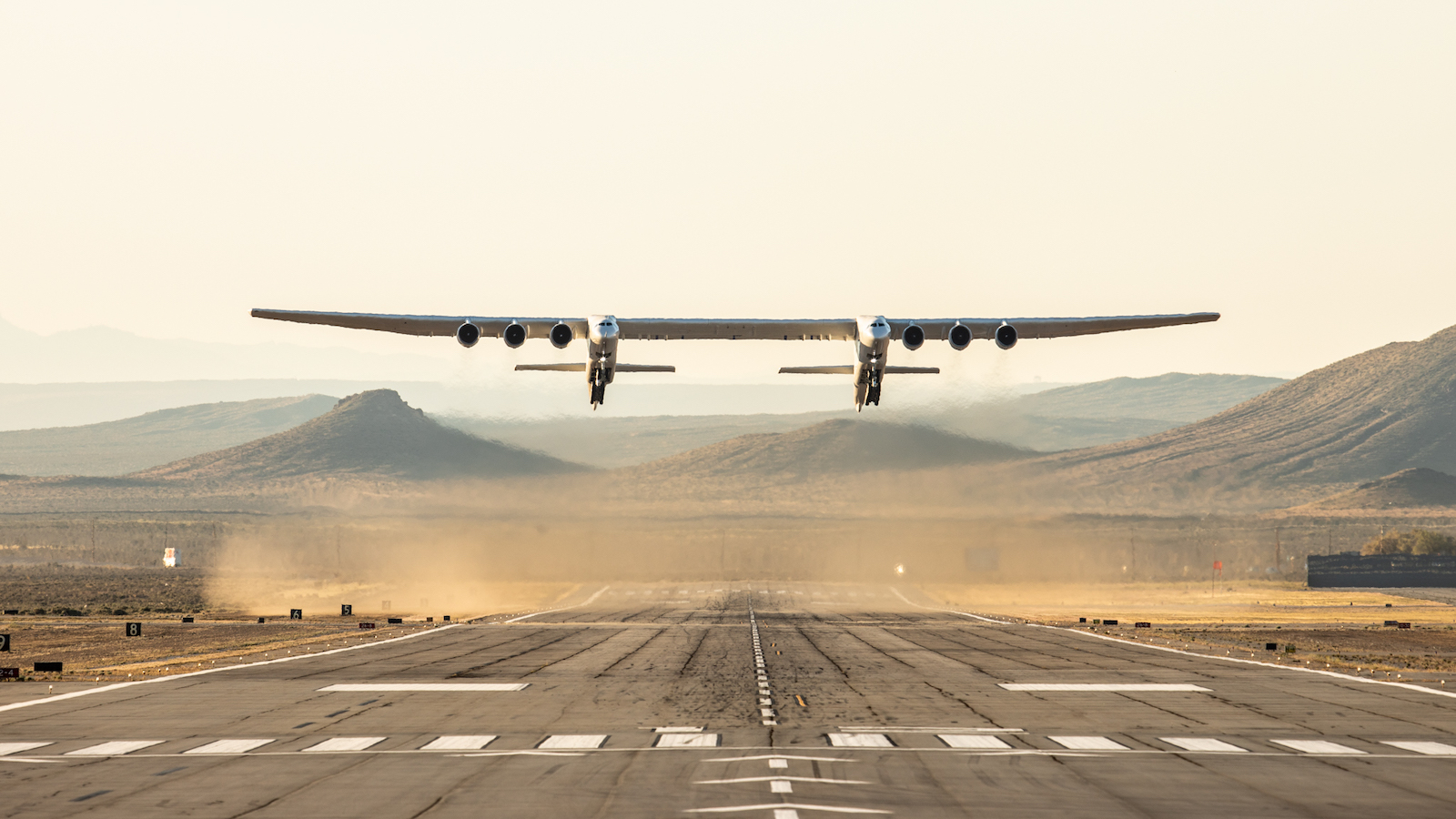On Wednesday, February 21st, at 01:40 p.m. PST (04:40 p.m. EST), an interesting package returned to Earth from space. This was the capsule from the W-1 mission, an orbital platform manufactured by California-based Varda Space Industries, which landed at the Utah Test and Training Range (UTTR). Even more interesting was the payload, which consisted of antiviral drugs grown in the microgravity environment of Low Earth Orbit (LEO). The mission is part of the company’s goal to develop the infrastructure to make LEO more accessible to commercial industries.
Continue reading “A Capsule With Antiviral Drugs Grown in Space Returns to Earth”Dream Chaser is Getting Tested at NASA
After a journey spanning almost two decades, Sierra Nevada Corporation’s Dream Chaser reusable spaceplane, named Tenacity, is officially undergoing environmental testing at NASA’s Neil Armstrong Test Facility located at NASA’s Glenn Research Center in anticipation of its maiden flight to the International Space Station (ISS), currently scheduled for April 2024. The environmental testing consists of analyzing the spacecraft’s ability to withstand rigorous vibrations during launch and re-entry, along with the harsh environment of outer space, including extreme temperature changes and vacuum conditions. This testing comes after Sierra Space announced the completion of Tenacity at its facilities in Louisville, Colorado last month, along with the delivery of Sierra Space’s cargo module, Shooting Star, to the Neil Armstrong Test Facility that same month, as well.
Continue reading “Dream Chaser is Getting Tested at NASA”Blue Origin Reveals its Orbital Maneuvering Vehicle: Blue Ring
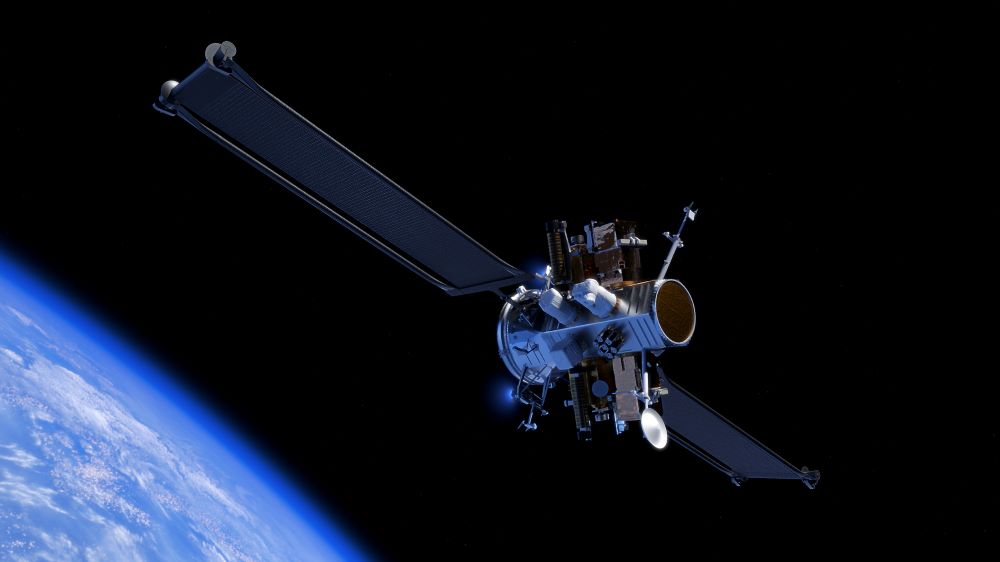
The Jeff Bezos-founded aerospace company, Blue Origin, recently announced its new and upcoming Swiss army knife-style spacecraft platform, Blue Ring, which comes after very little public discussion by Blue Origin regarding this project. For example, a January 2023 story broke when Blue Origin briefly announced a job posting for “Blue Ring Senior Program Manager” on its “Careers” page, but the job was pulled less than 24 hours later. Overall, Blue Origin has been quite mum about Blue Ring.
Continue reading “Blue Origin Reveals its Orbital Maneuvering Vehicle: Blue Ring”NASA Seeks Industry Proposals for Next-Generation Lunar Rover

As Artemis II gets ready to launch in November 2024, NASA recently announced it is pursuing contract proposals from private companies for the development of a next-generation Lunar Terrain Vehicle (LTV) to be used for crewed missions starting with Artemis V, which is currently scheduled for 2029. NASA has set a due date for the proposals of July 10, 2023, at 1:30pm Central Time, with the announcement for rewarded contracts to occur in November 2023.
Continue reading “NASA Seeks Industry Proposals for Next-Generation Lunar Rover”Blue Origin Announces the “Orbital Reef,” the Space Station they Plan to Build in Orbit
Blue Origin has certainly stepped up its game of late! After stepping down as the CEO of Amazon, Jeff Bezos has made it his personal mission to take the company he founded in 2000 and turn it into a powerhouse of the commercial space sector. Between some high-profile missions involving the New Shepard – which included passengers like Wally Funk, William Shatner, and even himself and his brother – Bezos has also been outspoken about his long-term vision.
Bezos describes this vision as “building a road to space so our children can build the future.” In the latest step towards achieving this, Blue Origin announced a new partnership with Sierra Space to develop a commercial space station in Low Earth Orbit (LEO), known as “Orbital Reef.” This mixed-use space station, which is to be completed by the end of this decade, will facilitate commerce, research, tourism, and facilitate the commercialization of LEO.
Continue reading “Blue Origin Announces the “Orbital Reef,” the Space Station they Plan to Build in Orbit”Once He Steps Down From Amazon, Jeff Bezos Will be Able to Focus his Energy on Blue Origin
When it comes to the private aerospace sector (aka. NewSpace), some names stand out from the rest. The most obvious of these is SpaceX (the brainchild of Elon Musk and the leading source of innovation in commercial space) and the United Launch Alliance (ULA), a joint venture between Boeing and Lockheed Martin. But what of Blue Origin, the private aerospace company created by Jeff Bezos in 2000?
In recent years, Blue Origin has fallen behind the competition and missed out on several billion dollars worth of contracts. But with Bezos stepping down as CEO of Amazon, industry sources have indicated that this could change soon (according to Eric M. Johnson at Reuters). With all of the opportunities available for commercial space, Bezos is now in a position to take a more hands-on role as the company faces a most pivotal year.
Continue reading “Once He Steps Down From Amazon, Jeff Bezos Will be Able to Focus his Energy on Blue Origin”RocketLab Recovers a First-Stage Booster for the First Time: “Return to Sender”
In recent years, one of the most impressive developments for space exploration has been the rise of the commercial space industry (aka. NewSpace). Beyond fulfilling contracts with space agencies like NASA to provide commercial and crewed launch services, private aerospace companies are also fostering innovation that is helping to reduce the cost of sending payloads to space.
Take RocketLab, the US/NZ-based small satellite launch company that has broken new ground with its Electron rocket. In a further bid to reduce the costs of individual launches, RocketLab announced last year that it would begin recovering and reusing the spent boosters of its rockets. Recently, the company took a big step by successfully retrieving the first stage of an Electron after it delivered a payload to orbit.
Continue reading “RocketLab Recovers a First-Stage Booster for the First Time: “Return to Sender””Who Wants to be a Trillionaire? Mission to Psyche Could Uncover Tons of Precious Metals!
It has been said that within the next quarter century, the world’s first trillionaires will emerge. It is also predicted that much of their wealth will stem from asteroid mining, a burgeoning space industry where minerals and volatile compounds will be harvested from Near-Earth Asteroids. This industry promises to flood the market with ample supplies of precious metals like gold, silver
Beyond Earth, there’s the long-term prospect of the Main Asteroid Belt, which would provide even greater abundance. This is one of the reasons why NASA’s Psyche mission to explore the metal asteroid of the same name in the Main Belt has many people excited. While the exploration of this body
Most of the Solar System Should be a Protected Wilderness. One-Eighth Left for Mining and Resource Exploitation
There is no doubt that our world is in the midst of a climate crisis. Between increasing levels of carbon dioxide in our atmosphere, rising temperatures and sea levels, ocean acidification, species extinctions, waste production, diminishing supplies of fresh water, drought, severe weather, and all of the resulting fallout, the “Anthropocene” is not shaping up too well.
It is little wonder then why luminaries like Stephen Hawking, Buzz Aldrin, and Elon Musk believe that we must look off-world to ensure our survival. However, there are those who caution that in so doing, humans will simply shift our burdens onto new locations. Addressing this possibility, two distinguished researchers recently published a paper where they suggest that we should set aside “wilderness” spaces” in our Solar System today.
Continue reading “Most of the Solar System Should be a Protected Wilderness. One-Eighth Left for Mining and Resource Exploitation”The World’s Biggest Aircraft – the Rocket-Launching Stratolaunch – Completes its First Test Flight
In 2011, Microsoft co-founder Paul G. Allen and Scaled Composites founder Burt Rutan announced the creation of Stratolaunch Systems. With the goal of reducing the associated costs of space launches, the company set out to create the world’s largest air-launch-to-orbit system. After many years, these efforts bore fruit with the unveiling of the massive Scaled Composites Model 351 Stratolaunch air carrier in the Summer of 2017.
Similar in principle to Virgin Galactic’s SpaceShipTwo, this behemoth is designed to deploy rockets from high altitudes so they can send payloads to Low-Earth Orbit (LEO). After multiple tests involving engine preburns and taxiing on the runway, the aircraft made its inaugural flight last weekend (Saturday, April 13th) and flew for two and half hours before safely landing again in the Mojave Desert.
Continue reading “The World’s Biggest Aircraft – the Rocket-Launching Stratolaunch – Completes its First Test Flight”
